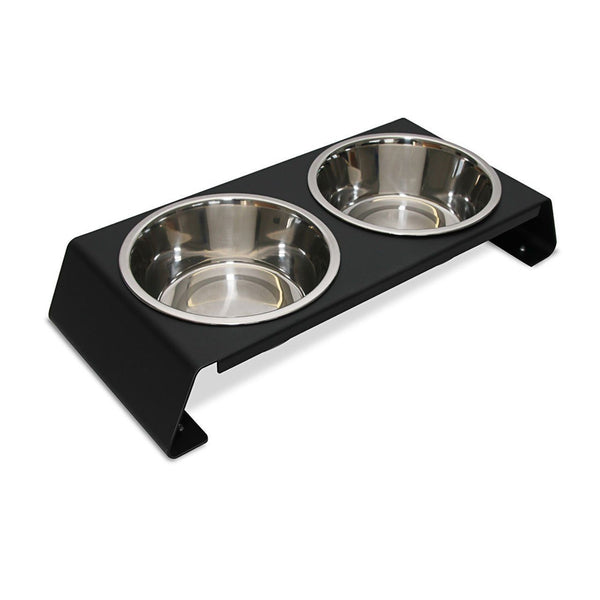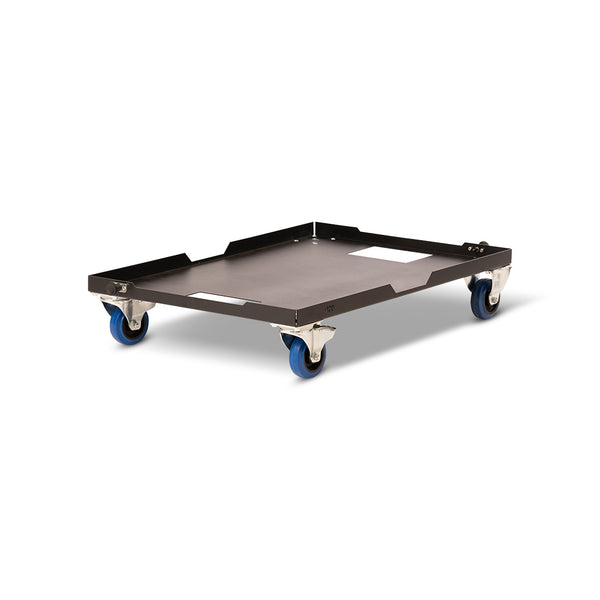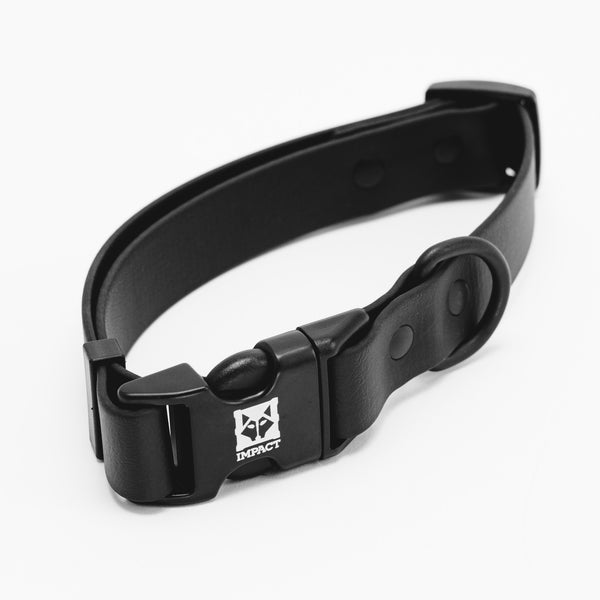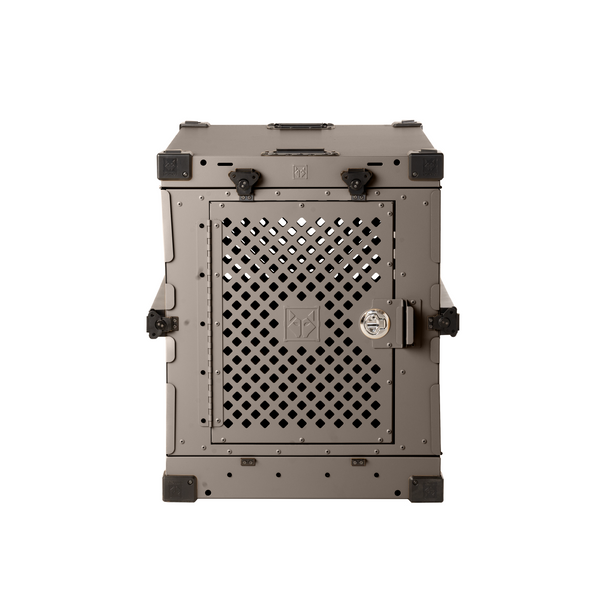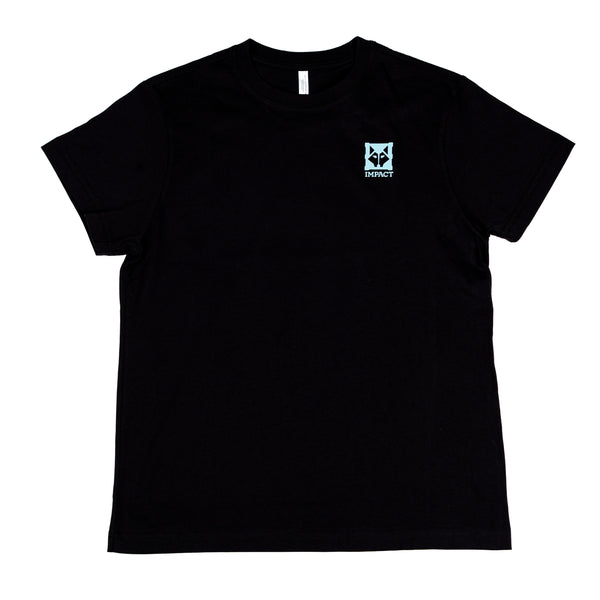Bad dog breath isn't just smelly, it's a sign that there may be something more serious happening inside your dog's mouth.
Most dogs who have bad breath also have swollen and inflamed gums, known as gingivitis. Just like humans, when plaque and tartar builds up on your dog's teeth, that means bacteria is growing. It not only looks icky, it's unhealthy. As bacteria accumulates under the gums, it can lead to gingivitis, periodontitis, and the infection may travel into the bloodstream. This can potentially cause disease of the heart, liver, and/or kidneys.
"More than 85% of dogs over the age of 3 have dental problems that require professional treatment," according to the Animal Medical Center of New York.
Routinely brushing your dog's teeth is the most beneficial thing you can do to improve your dog's oral health. Research has shown that daily brushing is very effective at controlling plaque and tartar buildup.
Although a lot of dogs don't mind having their teeth brushed, not every dog feels comfortable with a strange tool near their face. If you've never brushed your dog's teeth before, it can be a battle for the both of you. Forcing a toothbrush in your pup's face is probably the last thing you want to try if you want to make this a struggle-free daily routine. Introducing this important hygiene habit takes a lot of practice, time and PATIENCE.
Teaching your dog to feel comfortable with brushing her teeth will take baby steps. Keep in mind that this isn't going to be an instant success. Think of this process as a chance to spend more one-on-one time with your pup. You can progress together slowly and have a much better experience introducing this healthy routine with treats and positive associations. Some dogs may fly through this process, while others may need a couple weeks working on each step before he/she is comfortable progressing.

Are you and your doggo ready to give it a shot? Here are the baby steps to introducing teeth brushing to your dog:
Choose a toothbrush and toothpaste.
Toothpaste plays a crucial role in supporting long-term oral health by helping to prevent plaque and tartar buildup. Bonus: cleaning your dog's teeth with toothpaste also helps to freshen up their smelly breath.
Be sure to only use dog-specific toothpaste. Toothpastes made for humans may contain ingredients that are toxic to pets. Fortunately, there are dozens of toothpastes, gels and sprays made just for dogs, including poultry flavors ( yum? ).
Looking for the best toothbrush for your dog? With a little research online, you'll find various dog-specific toothbrushes and teeth-cleaning chew toys. Toothbrushes with longer handles and double ends are ideal for large breeds and dogs with long snouts. Other options include finger brushes, soft flexible tips, disposable, short handles and electric toothbrushes.
Begin without the toothbrush.
Start by building a positive association with the place where you'll be brushing your dog's teeth. Bring your dog to the spot where you plan to do her daily brushing. Have her sit while you handle her face for up to 60 seconds. Lift your dog's lip and look at her teeth and gums, rub her muzzle, and then immediately follow with praise and a reward. Work on this often until you feel comfortable introducing a toothbrush.
Introduce the toothpaste.
After you've picked out a toothpaste for your pup, offer it to them as a treat for a few days. This will also help you determine if they like the flavor.
Allow your dog to become familiar with the toothbrush.
When you feel that your dog is comfortable having you check her teeth and gums, then you two are ready to progress to the next step. Hold the toothbrush in your other hand while inspecting her teeth. This will introduce her to this new object and help her recognize that the toothbrush isn't going to hurt her. Then you can add a dab of their toothpaste with a small treat onto the brush to allow your dog to lick the toothbrush and interact with it. Offer a reward and immediate praise.
Practice brushing.
Start by lightly brushing the front teeth. Progress slowly. Don't try to brush all your pup's teeth right away, as they need time to get comfortable with the toothbrush and brushing sensation. Over time, you can progress from front teeth to the outsides of the teeth, to brushing all surfaces of the teeth.
When brushing, remember to gradually move the brush between your dog's cheek and teeth. Brush back and forth, or with a circular motion from back to front.
Gradually brush for longer.
Eventually, your dog will feel more comfortable having her teeth brushed. Practice brushing her teeth for longer periods of time. Aim for up to 60 seconds and frequently dip the brush frequently in water while brushing.
It is recommended that you brush your dog’s teeth at least once a day. Aim for at least once a week to inspect for any wounds or growths. You’ll also want to schedule a deep cleaning at the vet’s office at least once a year.
Best of luck to you and your fur friend!
Sources:
https://www.whole-dog-journal.com/health/how-to-properly-care-for-your-dogs-teeth/
https://heavy.com/pets/2017/07/top-best-dog-toothbrushes-finger-brush/
https://www.petmd.com/dog/care/5-things-can-improve-your-dogs-teeth
Photo credit: unsplash.com










